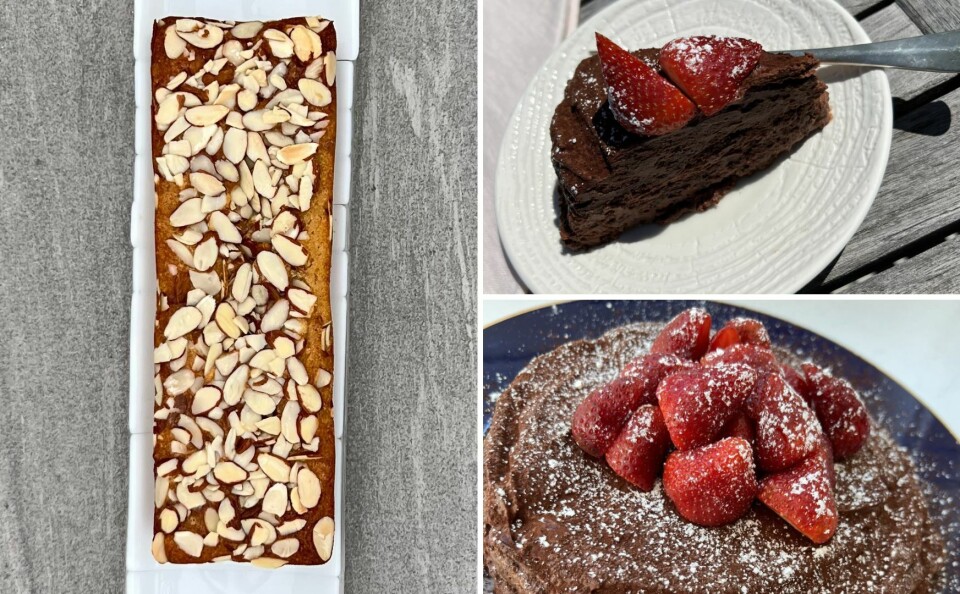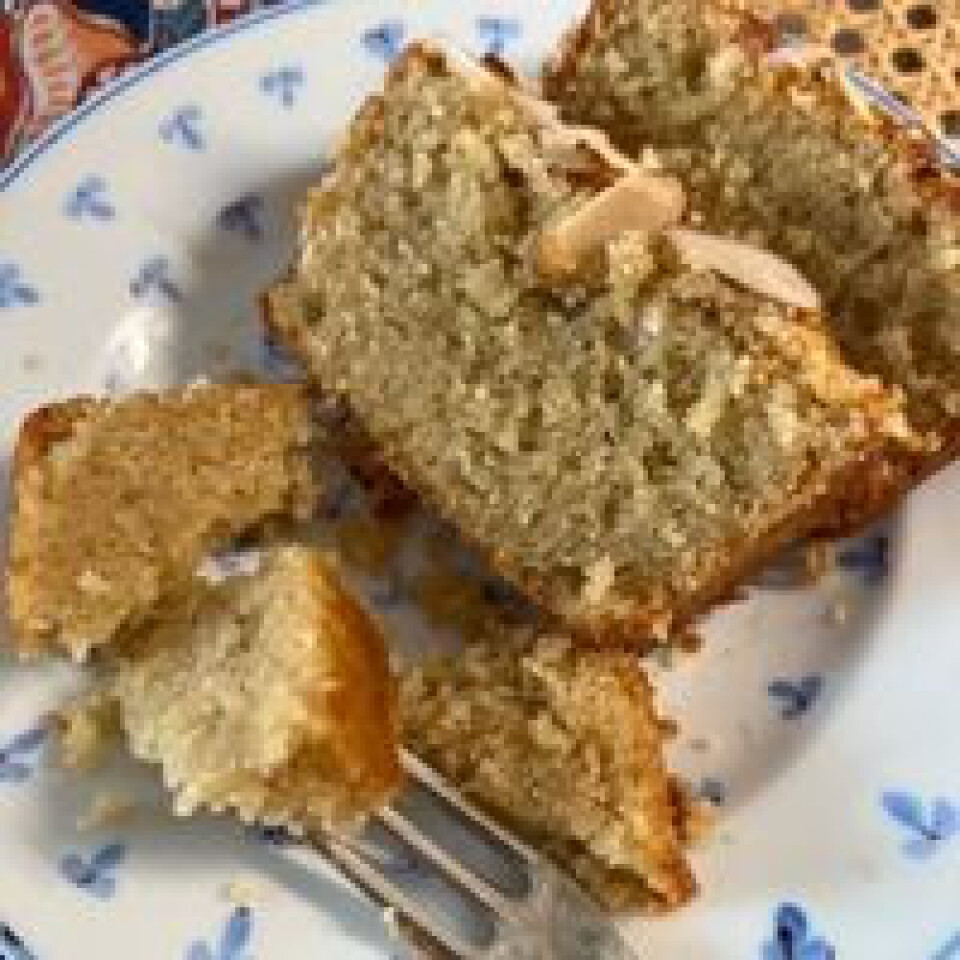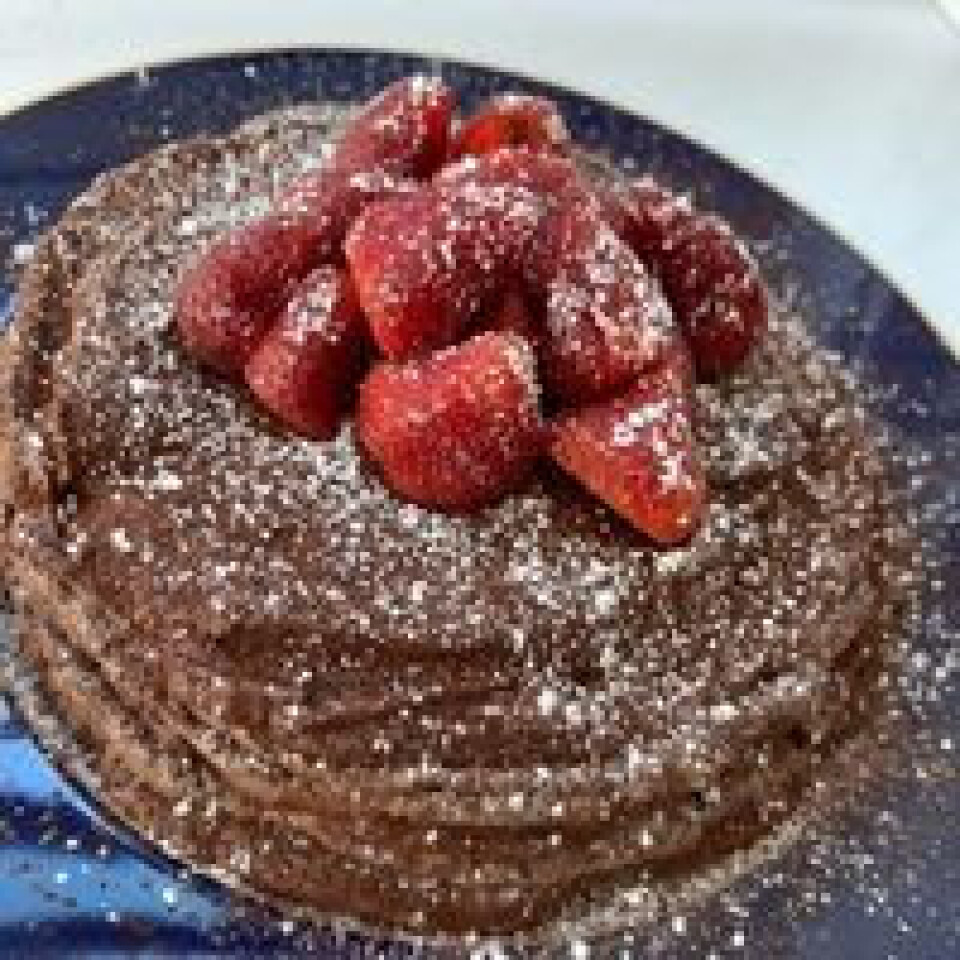-
An alternative to potatoes: 'My favourite aspect of salsify is its texture'
Laura Washburn Hutton explains how to prepare this delicious seasonal plant
-
France’s wild garlic season is here – but foragers should beware toxic lookalikes
Spring brings the fragrant plant to woodlands nationwide. We explain what to look out for
-
The culinary delights of dandelions in France
Laura Washburn Hutton shares her top tips for using seasonal tender leaves in the kitchen
RECIPES: Parisian picks, yoghurt cake and chocolate meringue gâteau
Two foolproof cake recipes from award–winning American food writer

In her new pâtisserie cookbook, Gâteau - The Surprising Simplicity of French Cakes, award–winning American food writer, Aleksandra Crapanzano, explores how Parisians shop and bake. Here she offers baking insight and tips as well as two great recipes.
I have written a dessert column for the Wall Street Journal for close to a dozen years, and so it is no wonder, I suppose, that I want both to debunk the great myth that Parisians return home after work and whip up a batch of impossibly delicate macarons or, say, layer a millefeuille, and also to shine a spotlight on the brilliance of French home baking because the classics are, in fact, brilliant.
Many of the recipes in this book date back, in some form or another, hundreds of years, some even to the Middle Ages.
They’ve stood the test of time because they are inratable – foolproof.
French are less wowed by novelty
Whenever I return to France, one of the things that immediately calms me in some inexplicably profound way is the immediacy of the French connection to their history.
They are simply less wowed by novelty and more interested in eating what they know and love, and they appreciate it being made well and with skill.
This is true throughout the country but, in Paris, there is a playful irreverence mixed in, and an ease with pivoting and changing things up.
Paris is where home cooks and chefs alike borrow confidently from all regions of the country and, for that matter, the world.
Outside Paris, France remains deeply differentiated by region
Identity is still profoundly linked to the land. And the gifts of the land, region to region, are notably different – from the Agen prunes grown in the Aquitaine to the walnuts of Périgord and Grenoble; from the apple orchards of Normandy to the golden mirabelle plums of the Lorraine; from the great lavender fields of Provence to the spicy piment d’Espelette of the Pyrénées.
Read more: MAP: A tour of France by local fruits and vegetables
Nearly every French person I know has a kind of agricultural map of France imprinted on their minds.
And Paris – in drawing the young from every corner of the country – has, for centuries, adopted the best of these regional specialties.
Inspiration is never far
Needless to say, shopping for food in the French capital is taken very seriously indeed. All the same, Parisians love shortcuts.
Walk into, say, La Grande Epicerie de Paris, the great gourmet supermarket in the seventh arrondissement, and you will see shoppers buying prepared puff pastry and freshly ground almond flour, not to mention jars of exquisite fruit suspended in sugar syrup and tender frangipane still a touch warm from the mixer.
You will find dried fruit of every variety, and orange rind crystallised, candied and dipped in chocolate.
And you will encounter a multitude of sugars, from raw to rock, from the lightest of powders to the moist grittiness of a dark Demerara. Inspiration is never far.
Why cake, you might ask?
Although Marie Antoinette didn’t actually bark, “Let them eat cake,” the French do have a thing for cakes.
Even madeleines, financiers and bouchons are all considered little gâteaux, as are nut tortes, savoury cakes and celebratory bûches de Noël.
Read more: Patissiers watch out? Normandy start-up creates 3D-printed patisserie
A French cake will, by and large, have less sugar, as nuance is prized over sweetness.
A bit of salt will bloom the flavours. A cup of yoghurt might add a moist backstage tang. Vanilla is used sparingly. The pure taste of apples is rarely masked by cinnamon. And the pucker of a lemon cake is not undermined by a thick blanket of frosting. Chocolate is most always dark and bittersweet.
Gluten-free cakes abound but are rarely named as such. They simply reflect an appreciation for nuts, toasted and ground, in baking.
Parisians tend to be avid tea drinkers. Think of Mariage-Frères, Palais des Thés and the teas of Fauchon and Hediard. Simple after-dinner infusions of verbena or mint perfume many a cake.
Read more: Did you know? France has a longer history of tea drinking than the UK
Parisians are highly likely, when baking, to reach for a handy bottle of Calvados, Armagnac, Cognac, eau-de-vie, Poire Williams or crème de cassis and to add a splash – more to impart a depth of flavour than an overt hit of booze.
Rose water and orange blossom water add delicate floral notes, as do the buds of chamomile and lavender.
The French sometimes macerate fresh fruit in a little leftover white wine to serve alongside a slice of cake, but crème fraîche is more or less de rigueur.
A cake may be lightly glazed or dusted with cocoa or confectioners’ sugar, but rarely heavily iced.
These modest cakes have a timeless, understated elegance. No wonder they are classic.
Gâteau au Yaourt à la Farine d’Amande (yoghurt cake)
Almond flour has been a pantry staple in Paris for as long as anyone can remember. It happens to be less expensive than it is here (USA) and, perhaps because of the turnover, usually quite fresh.
In the States, it’s still seen primarily as an alternative to flour for people with gluten sensitivity or for the health conscious, who like it for its protein content.
Almond flour provides texture and taste, and it keeps a cake moist, as almonds are naturally high in fat. It’s for this reason that I use less oil than in an all-flour yoghurt cake.
Almond flour and yoghurt keep the cake moist; Photo: Simon & Schuster

The downside is that almond flour cakes don’t rise quite as high.
Made with equal portions of flour and almond flour, however, lets you capture the best of both worlds. This cake is light, tender and moist and lasts for days.
Like the classic yoghurt cake, it plays well with spices, extracts, liqueurs, syrups and floral waters. Here I’ve added sliced almonds to the top, for crunch.
Ingredients
2 large eggs, at room temperature
245g whole yoghurt
200g granulated sugar
24cl vegetable, canola or grapeseed oil
1 teaspoon almond extract or 2 teaspoons dark rum
1 teaspoon orange blossom water, optional
Zest of a lemon or orange
210g almond flour
1.5 teaspoons baking powder
1.5 teaspoons baking soda
1.5 teaspoons fine sea salt
125g all-purpose flour
36g sliced almonds, optional
Method
Gâteau Concorde
(Concorde Chocolate Meringue and Mousse Cake)
Once everything is made, layer the meringue disks and ganache then refrigerate for at least 6 hours; Photo: Simon & Schuster

Chocolate meringue disks
Ingredients
6 large egg whites, at room temperature
¼ teaspoon cream of tartar
Pinch of salt
200g granulated sugar
50g almond flour
25g unsweetened
Dutch processed cocoa
Method
Whipped Chocolate (Mousse-Like) Ganache
Ingredients
50cl double cream and 280 grams dark chocolate, ie. Valrhona Caraïbe 66% cacao
Method
Chocolate curls
Making chocolate curls is too time-consuming to do at home. Instead, I like to use a mandoline to cut fine slices of chocolate off a bar. These shards are more, shall we say, industrial-chic than delicate, but let’s not get precious about it.
Use at least 200 grams of dark chocolate if you want to cover the entire cake and still allow everyone to sneak a few shards before dinner. Alternatively, dust the cake with cocoa, then confectioners’ sugar.
Assembly
Related articles
RECIPES: bake a French baguette or sweet potato bread like a master
RECIPES: three classic French dishes get an exotic twist
Ask a French person: why would bakery not swap my ‘soggy’ pastry?
























